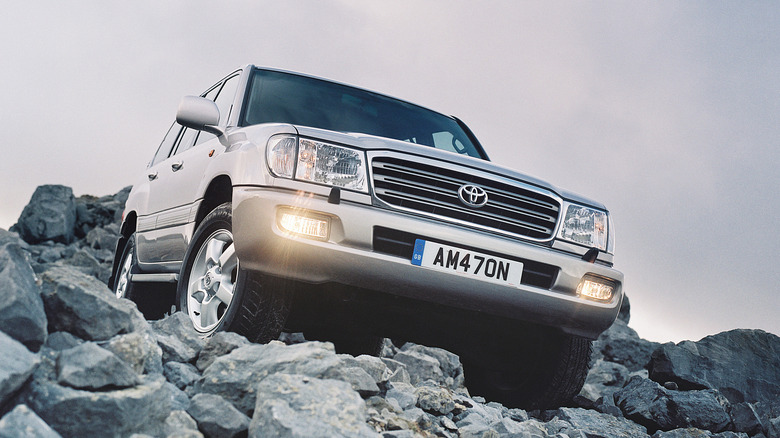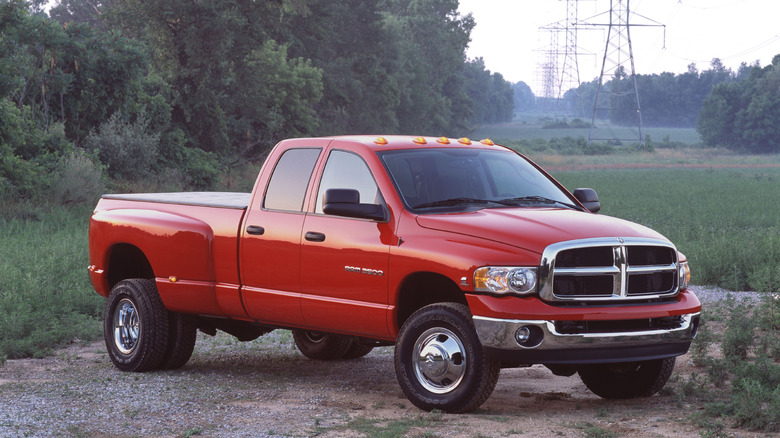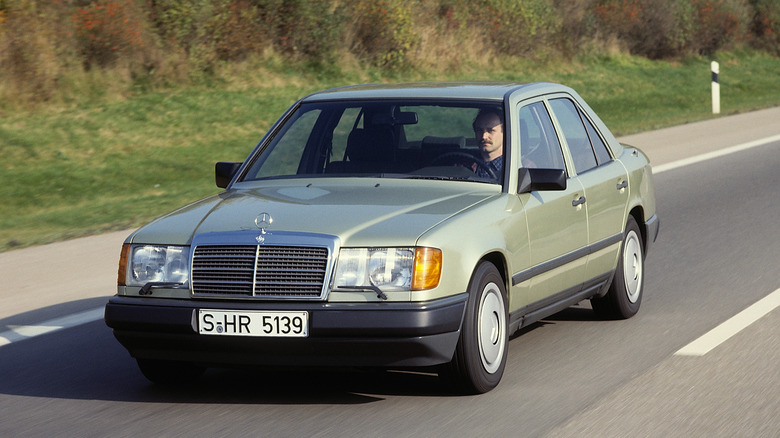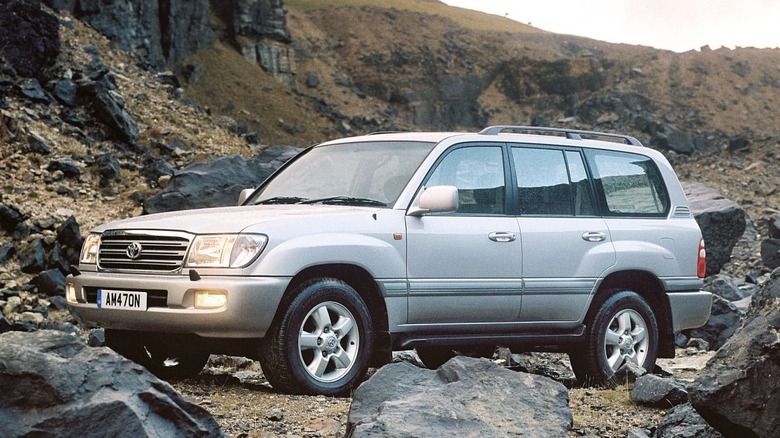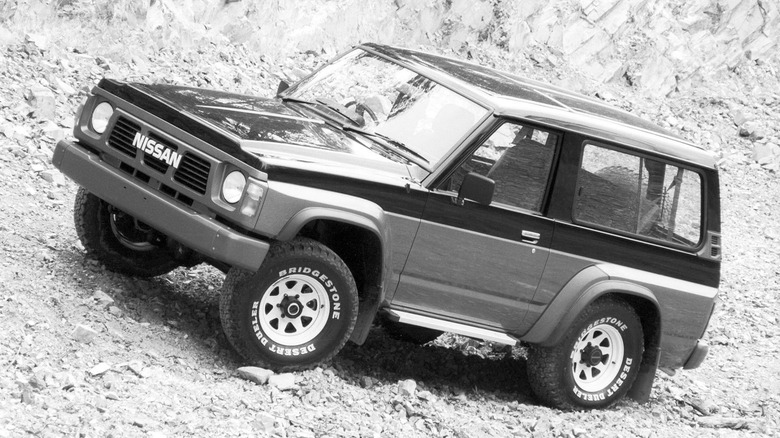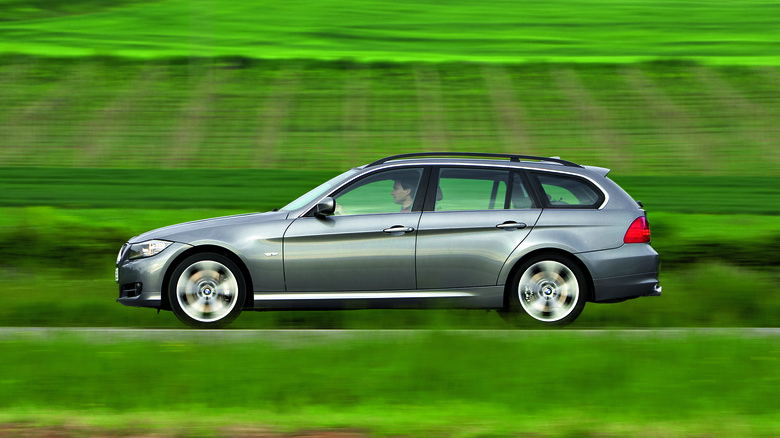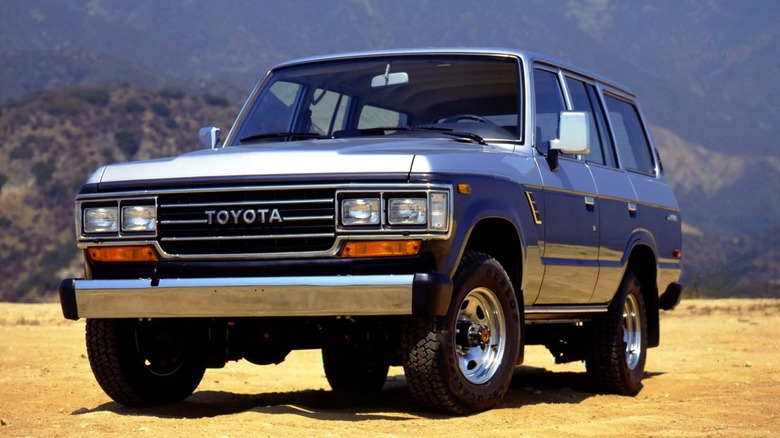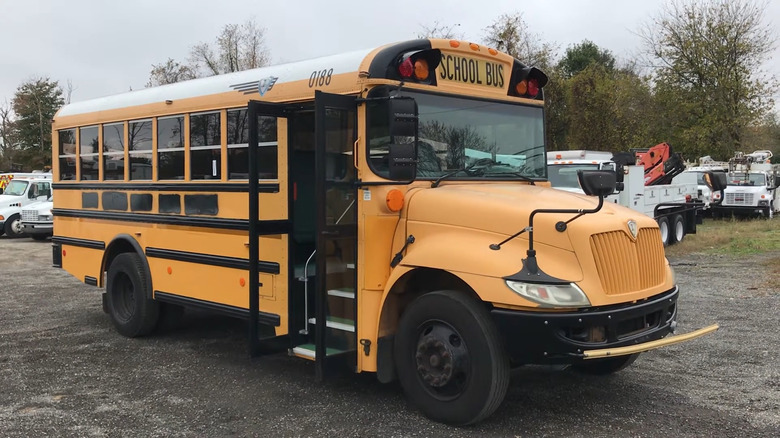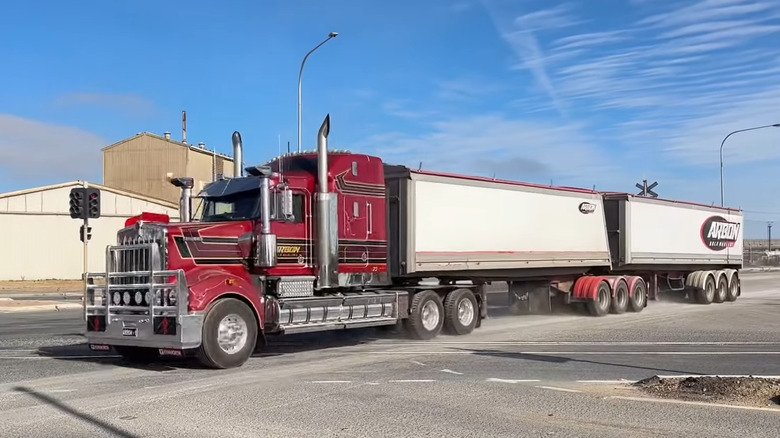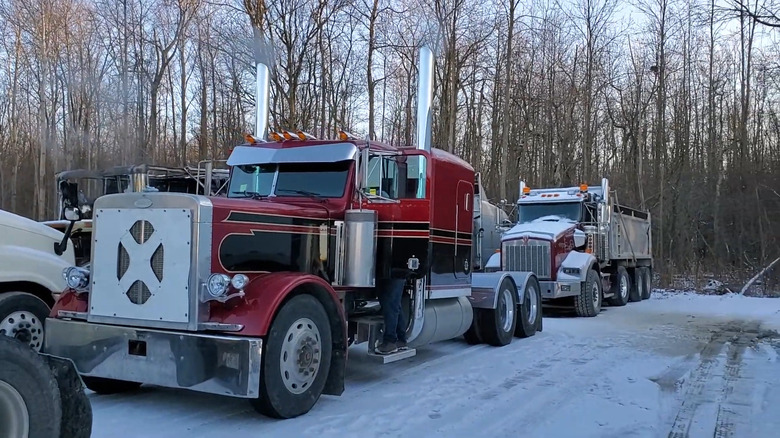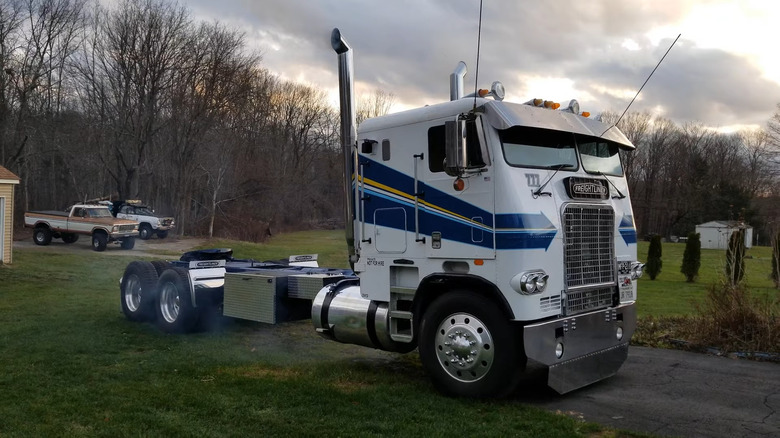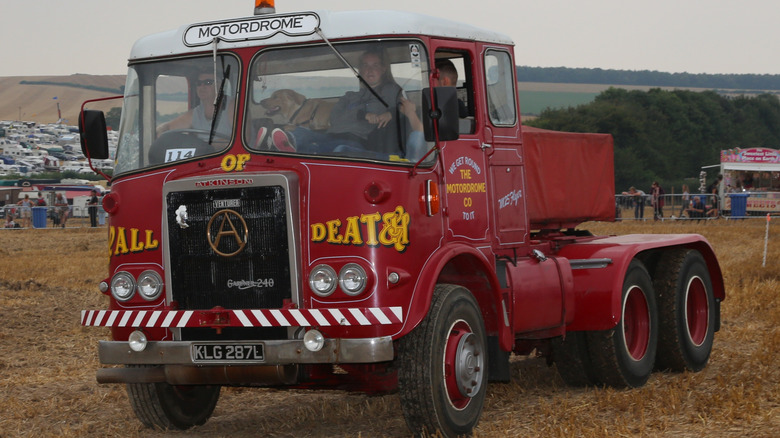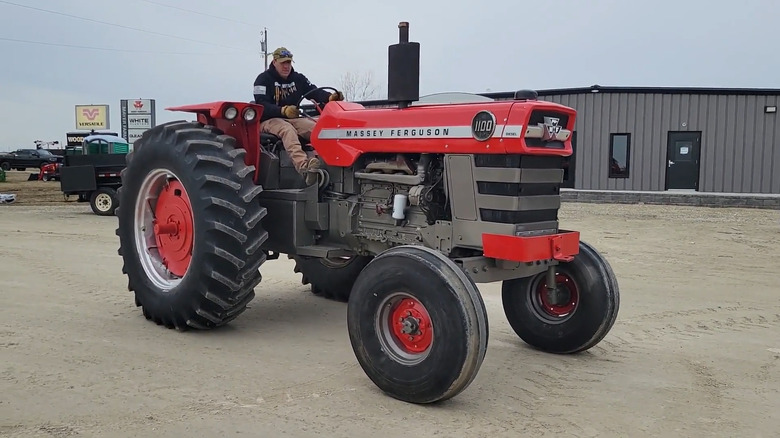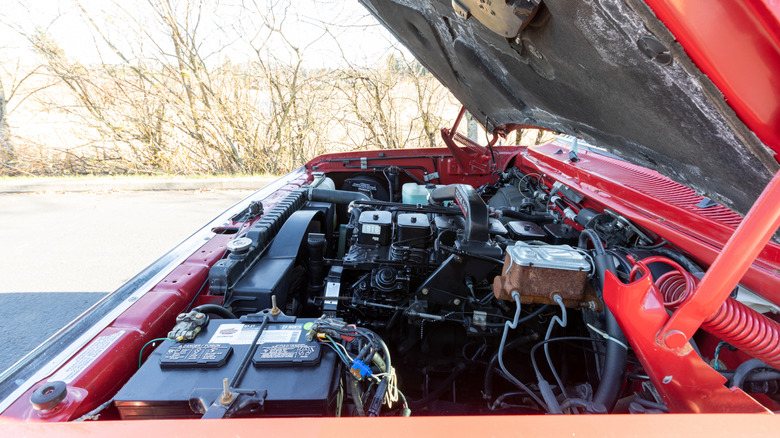13 Of The Best Inline-6 Diesel Engines Ever Made
The inline-6 engine layout has its fans in the gas world, but it's the de facto standard design among diesel aficionados. Hardly surprising, as these engines are less complex than any V layout and they're inherently balanced. These qualities lead to low manufacturing costs, good reliability, and smoother operation, which are crucial in diesel engines.
It shouldn't be surprising that some of the best diesel engines ever made are inline-6s. Passenger cars. SUVs. Trucks. Semis. Marine applications. Industrial machinery. Peak into any mobility category, and you can find one of these diesel workhorses moving things around.
But even in this sea of reliable, sturdy engines, there are straight-six diesels that stand out. These engines moved the goalpost in the category, be it with abnormally long lifespan or performance that defies expectations. Let's take a closer look at some of the best inline-6 diesel engines ever made, from every mobility category.
Cummins 6BT (1989-2007)
The Cummins 6BT is one of the best diesel engines ever made. It's very popular among pickup truck enthusiasts, thanks to the unique combination of power, reliability, and efficiency. The 6BT was what gave Dodge the arsenal it needed in the fight against GM and Ford during the 1990s. Otherwise, the brand's Ram heavy-duty models would've probably gone extinct by now.
How? This engine beat its V8 rivals where it hurts the most — power. Sure, it had two fewer cylinders, but it was also the only truck diesel engine with direct fuel injection in 1989. Of course, Cummins also equipped it with a turbocharger and added an air-to-air intercooler, resulting in 160 hp and 400 lb-ft of torque. These numbers are not very impressive today, but they were best-in-class in the 90s. And Cummins brought the 6BT to new heights toward the end of its lifecycle, with the last 6BT equipped with Common Rail fuel injection, and producing 325 hp at 2,900 rpm and a monstrous 610 lb-ft of torque around 1,600 rpm.
However, the 6BT isn't on this list only because of its performance figures. Thanks to the excellent reliability and tough internal components, Common-Rail-equipped versions can be easily tuned to 500 hp and 1,000 lb-ft of torque. Or you can leave it as is and enjoy north of 500,000 miles before a rebuild is necessary. This is particularly true for the older P-pump versions, which are basically indestructible.
Toyota 1HZ (1990-Present)
Toyota's 1HZ was never designed for high power or torque figures, but if you wanted to reach remote places without opening the bonnet, this 4.2-liter naturally aspirated diesel was the one to go for. In fact, I've used a 1994 Land Cruiser 70 Series Troopy (image above) for my hiking club for over a decade now, and the engine just keeps going, with minimal maintenance required. I haven't even had a problem with the manual fuel pump, though others say it usually dies at the 250,000-mile mark. This is touted as a million-kilometer (620,000-mile) engine, and because most of its parts are mechanical, it's easy to repair on the go — crucial for a vehicle that will spend most of its time in remote places.
However, the downside is this thing is excruciatingly slow. The engine produces only 129 hp and 210 lb-ft of torque and struggles with the 70-Series Land Cruiser body. With the rooftop tent on, my Troopy can only reach 75 mph on the highway. Slow as it may be, though, it will always bring you to your end destination. On-road. Off-road. It doesn't really matter. There is a reason why organizations like the UN, Red Cross, and Doctors Without Borders still rely on the 1HZ to provide help around the world. Moreover, people in Africa love it so much, Toyota still sells the Land Cruiser 78 with the 1HZ there. Heck, it's so popular, there is an aftermarket GTurbo turbo kit that significantly increases its potency.
Mercedes-Benz OM606 (1993-2001)
The Mercedes-Benz OM617 five-cylinder diesel is a special engine with unmatched reliability in the passenger car sector, but it's quite underpowered. That's where the OM606 comes in. A significantly newer 3.0-liter inline-6 turbodiesel, the OM606 combines power, efficiency, and sturdiness like few other Mercedes-Benz engines. With its cast-iron block, strong internals, and good lubrication, it's one of the toughest diesel engines out there. Heck, enthusiasts call it the "diesel 2JZ"!
Still, it's the power potential that makes this one of the best Mercedes-Benz diesel engines. The OM606 is a dual overhead camshaft (DOHC) engine with four valves per cylinder. This allows more oxygen inside the engine and provides more control over the valve's opening/closing process, improving power and efficiency. Moreover, the engine features an electronically controlled mechanical fuel pump, which provides even more control over the combustion process. As a result, the turbocharged OM606 produces respectable 175 hp and 243 lb-ft of torque from the factory.
Thanks to its robust construction, though, the OM606 can be tuned to easily get 500 hp out of it, even with stock internals — an impressive figure for a 1990s 3.0-liter turbodiesel engine. And because the OM606 is an indirect injection engine, you won't need to change the injectors to do it, either!
Toyota 1HD-FT & 1HD-FTE (1992-2008)
If you're not impressed by the Toyota 1HZ engine's outstanding robustness, the Japanese automaker has another durable inline-6 diesel gem with significantly more power. The 1HD-FT has the same 4.2-liter capacity, but also a turbocharger, intercooler, four valves per cylinder, and electronic injection, so it produced 168 hp and 280 lb-ft of torque.
Thanks to its significantly higher performance envelope, the 1HD-FT was first installed in the Land Cruiser 80 Series, which is part of the more luxurious, station wagon family. For the next-gen 100 Series, though, Toyota upped the ante with the 1HD-FTE, one of the best diesel engines Toyota ever built. The revised unit produced 202 hp and 317 lb-ft of torque available between 1,400 and 3,200 rpm.
But it wasn't just about performance. The 1HD-FTE proved super reliable and durable, so Toyota later installed a non-intercooler version in the workhorse 70 Series Land Cruisers. It's still a popular engine among Land Cruiser enthusiasts today, which says a lot about its toughness and durability. With regular maintenance, the 1HD-FTE will easily surpass 400,000 miles.
And really, it's not surprising that it's so durable. Its block is made from a tough high-strength cast iron, the rods from stiff carbon steel, and the pistons from lightweight alloy. Add to that a simple, mechanical fuel pump, and the result is a sturdy, durable turbodiesel unit.
Nissan TD42 (1988-2007)
Toyota isn't the only Japanese automaker popular among off-road enthusiasts. Nissan has enjoyed similar popularity with the off-road-focused Patrol — the first car to mount Japan's famous Mt Fuji. Off-road capability and reliability have always decorated the Patrol, and at the forefront were its engines — particularly the TD42 diesel, one of the most reliable JDM engines ever built.
A direct competitor to Toyota's 1HZ, the initial TD42 was a naturally aspirated 4.2-liter inline-6 unit. It produced just 114 hp and 192 lb-ft of torque — slow, but perfectly fine for off-roading. Crucially, it was a sturdy, reliable engine, and incredibly easy to maintain. See, unlike its rivals, the TD42 didn't have a timing belt or chain, and instead utilized a series of gears to drive the camshaft, and replacements weren't necessary.
Interestingly, though, Nissan weakened the TD42 in 1994 with thinner and lighter pistons, which lasted until 1997. The engine was still very reliable, but didn't respond well to tuning. Fortunately, Nissan later introduced a sturdier turbocharged version — the TD42T3 "Blacktop." The boosted version was significantly more potent, producing 153 hp and 243 lb-ft of torque, but also tougher, thanks to the beefier pistons. With an average lifespan of 300,000-plus miles, the TD42 proved as one of the most reliable diesel engines in the industry.
BMW M57 (1998-2013)
You provably weren't expecting a BMW engine on this list, but here we are with one of the automaker's best engines — the M57 six-cylinder diesel. Why? Well, let's just say that for starters, it's very potent and efficient. Thanks to the common-rail injection system and turbocharger, the M57 initially produced 148 hp, but BMW pushed it to a whopping 282 hp near the end of its lifecycle. As such, the M57 has found it way in many BMWs, from the 3 Series to the X5.
Perhaps the most engaging application was in the well-mannered 2009 335d, where the twin-turbo M57 produced 265 hp and an astonishing 425 lb-ft of torque. 0-60: 5.7 seconds. The real kicker — the 335d was rated at 36-mpg highway! Yes, it wasn't as quick as the 3.0-liter N54 gas engine of that era, but the M57 is significantly more durable. BMW equipped it with cast aluminum pistons, forged-steel crankshaft and forged connecting rods, which made it famous among tuning enthusiasts.
It's so sturdy that people bring the M57 to 700 hp and 1,000 lb-ft of torque with the stock timing chain and internals! Was this enough to interest you in this engine? Here are the best and worst years for the BMW M57 diesel.
Toyota 12H-T (1985-1990)
Toyota's legendary lineup of inline-6 diesel engines didn't start with the 1HZ, nor the 1HD-FT. Before these engines even appeared on the market, off-road enthusiasts were enjoying the 12H-T — a 4.0-liter turbocharged unit with direct injection that powered the facelifted Land Cruiser 60 Series, one of the best-looking Toyota SUVs ever designed.
The 12H-T isn't very powerful by today's standards, producing only 134 hp and 232 lb-ft of torque. Still, it was a huge upgrade over the 2H naturally aspirated diesel in the pre-facelift 60 Series, which only produced 102 hp. Crucially, the 12H-T proved to be one of the most durable Toyota diesel engines. Not a small feat considering Toyota's diesel lineage is full of tough workhorses, which remain popular to this day because they just refuse to die. I've seen a few 12H-Ts in the wild, and owners easily surpass 300,000 miles without major repairs
Of course, all this shouldn't be surprising. After all, the 12H-T is relatively unstressed, yet made from sturdy components. The block is made from cast iron, while the pistons are made from temperature-resistant alloy. The simple, mechanical diesel fuel pump and almost no electronics only add to this engine's appeal.
International DT466 (1971-2016)
International's DT466 inline-6 diesel engine was in production for more than four decades, which tells a lot about how good it is. The DT466 proved popular in box trucks and school buses, while Ford used it extensively in its four-wheel-drive tractors.
Initially a 6.8-liter unit, the engine grew to 7.6 liters unit in the most powerful MaxxForce DT466E variant. Naturally, the DT466 has seen many improvements over the years, though direct injection and turbocharging were always standard. This improved the DT466 horsepower figures significantly, with the latest DT466E variant producing 300 hp and a whopping 860 lb-ft of torque.
Yet, it was the revolutionary wet sleeve design that differentiated the DT466 from other medium-duty engines. The wet sleeve cylinder liners protect the cylinders while also improving cooling, giving the DT466 exceptional longevity. But International went further and equipped this engine with a massive forged-steel crankshaft and forged-steel rods. Moreover, the block and head were both made from cast iron, and the DT466 featured a factory main cap girdle. So, unsurprisingly, tuners were able to push the DT466 up to 1,200 hp!
Caterpillar C15 (1998-2007)
Few heavy-duty diesel engines can be put in the same place as Caterpillar's C15. This 15.2-liter inline-6 turbodiesel behemoth quickly became a staple in most heavy-duty industries, powering everything from semis, like the Kenworth T904, to buses, industrial equipment, marine applications, agricultural vehicles, power generation, and more.
But what drove the C15's popularity? Well, let's say that manufacturers loved its power output and efficiency; the C15 was available in power outputs ranging from 375 to 625 hp, with the most potent versions producing 2,000 lb-ft of torque! An ECU update can even bring the figures to 750 hp and 2,460 lb-ft of torque! Fuel efficiency was also excellent, mainly thanks to the upgraded fuel system over the predecessor.
Owners also love the C15. Hardly surprising, as it's one of the longest-lasting diesel engines of all time, with a one-million-mile lifespan, thanks to the sturdy internals, like high-strength connecting rods and crankshaft. Caterpillar also equipped it with a high-volume oil pump, which lubricated and cooled all these parts more efficiently, further enhancing their lifespan.
Thanks to its tough construction, the C15 is a low-maintenance engine, which further elevates its popularity. Besides, the fact that it's used across a wide variety of machinery means that you can run most of your fleet with the C15. This simplifies maintenance and repairs, bringing costs down.
Detroit Diesel 60 Series (1987-2011)
The Detroit Diesel 60 Series inline-6 turbodiesels are the most widely used heavy-duty diesel engines in North America since 1992. These behemoths have been mainly used in class 7 and 8 semis, playing a pivotal role in American trucking. However, thanks to their versatility, the 60 Series engines were also used in marine applications, power generators, mining equipment, and fire and emergency vehicles.
Owners love these engines, and it's easy to see why. Detroit Diesel was the first to use a drive-by-wire system with an electronic control module (ECM), which enhanced power and efficiency. As a result, even the first two 60-Series engines, launched in 1987, were quite the powerhouses. The smaller, 11.1-liter unit produced up to 350 hp and 1,250 lb-ft of torque, while the 12.7-liter motor was good for up to 455 hp and 1,550 lb-ft of torque. Thanks to their ECM module, though, these engines are easy to tune with a simple remap — Pittsburgh Power extracted 682 hp from the 12.7-liter engine. And in 2001, Detroit Diesel launched an even larger 14.0-liter variant, which produced up to 515 hp and 1,650 lb-ft of torque from the factory.
Cummins 855 Big Cam (1976-1985)
Cummins' inline-6 diesel expertise isn't only apparent in its pickup truck units. The company has also been trading blows with Detroit Diesel and Caterpillar for decades, and for a long period, the ace up its sleeve was the 855 Big Cam engine. This 14.0-liter inline-6 turbodiesel was designed to deliver power, efficiency, and durability to highway trucks, boats, and industrial machines.
Depending on the generation, the 855 Big Cam produced anywhere between 250 and 475 hp, making it one of the most powerful diesel engines during the 1980s. However, it was the excellent efficiency that distinguished this engine from its competitors. As its name suggests, the 855 used a bigger 2.5-inch camshaft diameter, which allowed a shorter injection interval, leading to better fuel economy and lower emissions. This was very important after the 1973 oil crisis, but Cummins also made sure the 855 Big Cam retained drivability with low-rpm torque.
Yet, the engine's legendary status is due to its outstanding durability. The 855 Big Cam is fully mechanical, with wet sleeves and tough internals, giving it a million-mile lifespan. It's widely used today, which isn't all that surprising. Parts are still available and thanks to its simple construction, the 855 Big Cam is easy to maintain and repair
Gardner 6LXB (1966-1979)
Gardner & Sons is a coveted British manufacturer of diesel engines, mainly for the marine industry. During the 1950s, 1960s, and 1970s, Gardner's engines were ubiquitous in British trucks and buses, thanks to their efficiency and reliability. And one of the brand's most popular engines is the 6LXB, used in both automotive and marine applications.
This naturally aspirated 10.45-liter motor produced between 127 and 180 hp, depending on the application, and crucially, had an outstanding 40% thermal efficiency. Still, it was the way that it delivered that mattered. Unlike its higher-revving rivals, the 6LXB delivered its full torque from just 975–1100 rpm and reached peak power at 1,850 rpm.
If that all wasn't impressive enough, the 6LXB is also super reliable, with a cast iron block and cylinder head for strength, alongside a cast alloy crankcase. The crankshaft main bearings also are both vertically and horizontally braced, further improving the rigidity. As a result, according to some sources, the Gardner 6LXB has a potential lifespan of several hundred thousand hours! No wonder it's still widely used in yachts today!
Perkins 6.354 (1960-late 1990s)
The Perkins 6.354 engine has gained fame in agricultural circles, particularly the turbocharged versions, which were used in Massey Ferguson tractors. I live in an area where these tractors were very common and are still used to this day mainly thanks to the tough and durable engine. The 6.354 also requires minimal maintenance and is easy to work on, even on the site — crucial for developing markets. No wonder it was in production for over four decades, with Perkins producing over 1 million units!
A 5.8-liter inline-6 unit, the Perkins 6.354 was equipped with direct fuel injection and a DPA fuel pump. Perkins also used a toroidal chamber in the piston crown, which enhanced combustion efficiency. As a result, the 6.354 produced between 85 and 120 hp, while being highly fuel efficient. Still, the turbocharged T6.354 was even more powerful, producing up to 240 hp in marine applications.
How we chose these engines
For this piece, we mainly listed tough and reliable engines that will stand the test of time. However, power, efficiency, and widespread usage also played a significant role in the evaluation. Also, we tried to include engines from different automotive categories, including passenger vehicles, SUVs, trucks, and semis. For the selection process, we consulted online experts and forums, but the writer also had experience with some of them.
